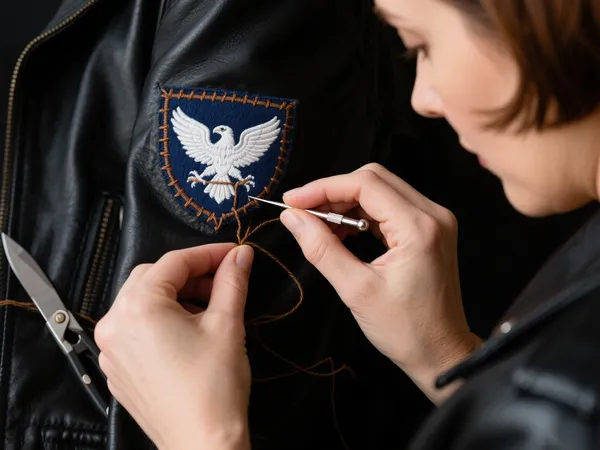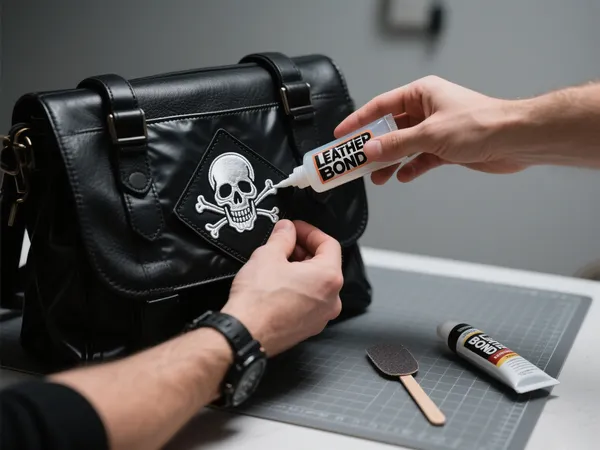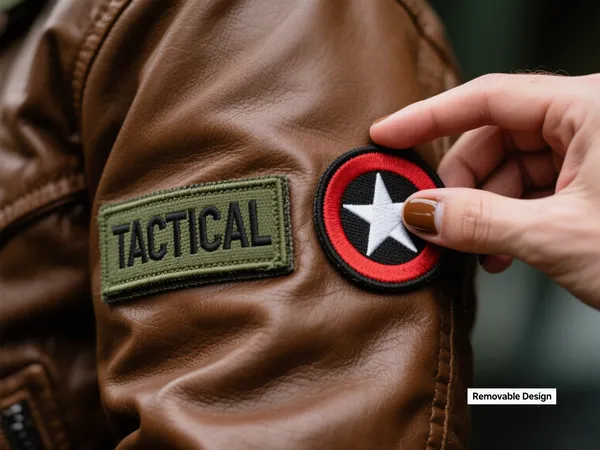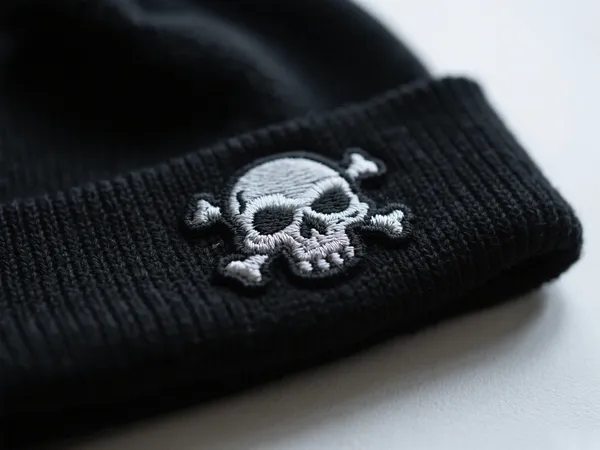Leather jackets and accessories are timeless, tough, and stylish—but when it comes to adding custom patches, things can get tricky. While iron on patches work great on cotton and denim, applying them to leather is a different story. In this article, we’ll explore whether you can use iron on patches on leather, safer alternatives, and how to properly customize leather gear without damaging it.
If you’re planning to upgrade your leather jacket, vest, or bag with patches, read this before you reach for the iron.

Can You Use Iron On Patches on Leather?
The short answer is: not recommended.
While it’s technically possible to apply iron on patches on leather, it carries significant risks:
- Heat damage – Leather is sensitive to high temperatures. Using a hot iron can scorch, discolor, or warp the surface.

- Adhesive failure – Iron-on adhesives are designed for absorbent fabrics. Leather’s smooth, non-porous surface doesn’t bond well with traditional heat-activated glue.
- Surface distortion – Pressure and heat can leave permanent impressions or shrink marks on real leather.
If you’re working with genuine leather, it’s best to avoid iron-on applications. However, for faux leather or PU materials, there’s a slightly better chance of success—though still with caution.
Alternative Ways to Apply Patches on Leather
Instead of risking your leather garment, consider these safer and more effective methods:
1. Sewing the Patch
This is the most reliable and long-lasting way to attach a patch to leather. Use a leather needle and strong nylon or polyester thread. If the patch is thick or the leather is stiff, you may want to take it to a tailor or leather specialist.
- Works for: leather jackets, vests, bags
- Best patch types: custom leather patches, embroidered patches with sew-on backing

2. Using Leather-Safe Adhesives
Some industrial-strength fabric glues or leather-specific adhesives can work well. Look for adhesives that remain flexible after drying and are waterproof.
- Application tip: Roughen the leather surface slightly with fine-grit sandpaper for better grip, then apply the glue evenly.

3. Velcro or Snap-on Backing
This option is ideal for removable patches, especially if you want to switch designs. Velcro patches can be sewn onto the leather or attached using adhesive bases designed for leather goods.

4. Custom Leather Patches with Pre-sewn Borders
These are specially designed patches meant for leather jackets and bags. They often come with decorative stitching or rugged finishes that complement leather’s texture and can be sewn or glued on.

How to Customize a Leather Jacket with Patches
If you’re customizing a leather jacket, here’s a step-by-step method for using the safest approach:
Sew-On Patch Method
- Choose the patch – Make sure it has a flat, clean edge and enough surface for stitching.
- Mark the location – Use chalk or removable marker to outline the placement.
- Use a leather needle – Regular needles will break or cause damage.
- Hand-stitch or use a sewing machine – If the leather is thick, hand-stitching may give you better control.
- Seal the stitching – Apply a leather sealant to prevent fraying or moisture penetration.
This method is perfect for adding iron on patch for leather jacket alternatives without compromising the material.
Types of Patches That Work Well on Leather
If you want the best result, consider these patch types for leather:
- Embroidered Patches – Choose sew-on backing instead of iron-on.
- Custom Leather Patches – Perfect match for leather jackets and bags. These can be debossed, laser engraved, or screen printed.
- Woven Patches – Lightweight and less bulky for minimalist looks.
- PVC Patches – Ideal for outdoor or tactical leather gear due to their waterproof and flexible nature.
Common Mistakes to Avoid
- Using iron-on patches directly on genuine leather – As mentioned, this often leads to heat damage or failed adhesion.
- Applying heat without protection – Some try to use cloth between the iron and patch, but this rarely helps enough with leather.
- Skipping a test area – Always test glue or adhesive on a small, hidden area first.
Final Thoughts
While iron on patches on leather may seem like a quick solution, it’s not the best approach for preserving the integrity and look of your leather garments. For best results, opt for sewing, leather-safe adhesive, or custom leather patches designed for durability and style.
If you’re serious about customizing your leather jacket or accessories, do it right—with the proper materials and techniques. A well-applied patch won’t just look great; it’ll last as long as the leather itself.



